A principle which always works well (for me since 1982) is to mulch the soil and feed soil life, after clearing last harvests in the autumn. Any decomposed organic matter is good to use, enough that the original surface is not then visible. It's quick, simple, and has amazing results - see the microscope analysis below, comparing dig and no dig. I give an introduction to no dig in this Guardian blog.
You can spread compost underneath plants growing, such as the kale and broccoli below. There is no need to sieve it, just break lumps with a fork, and see my compost heaps in the latest video.
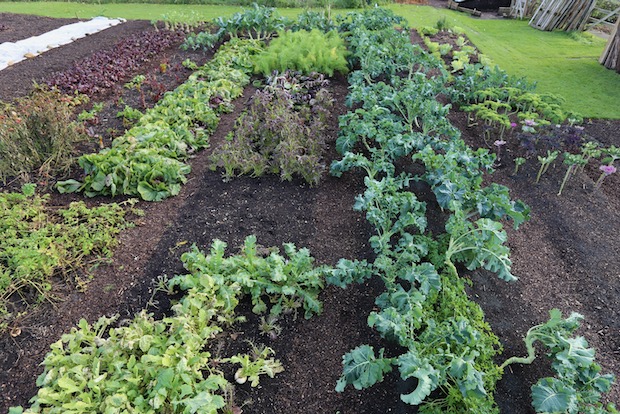
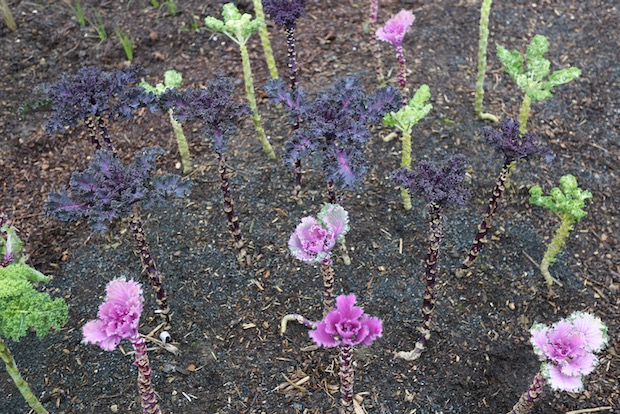
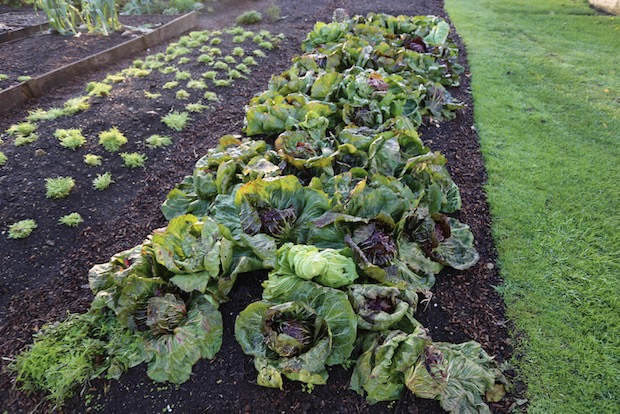
This can be a bountiful time of year. I am still selling a lot of salad, a few boxes of vegetables and putting roots to store like beetroot. Whether they can stay in the ground depends how cold your climate is: I start to see damage on many roots when nights go to -4C/25F or lower.


Sowing in winter
New growth in dark and cool months is slow. Seed germination is even slower. With just one or two exceptions like micro greens and peas for shoots, I recommend not sowing anything from now until February. While it is possible to get seedlings underway ind winter, this is the question to ask:
- Is it worth the time and trouble?
I have finished sowing for the year and all that remains is to plant out the broad beans in early December. In a colder climate than here, you can sow broad beans say mid October for planting out November: I was contacted by a man from Western (maritime) Norway who succeeds with those timings, Aquadulce Claudia.
I recommend sowing in modules to transplant because of mice, who eat the seeds, and birds which pull up seedlings to eat the sprouted seeds. I have had this happen often enough to make me happy in the extra work of raising plants. Also broad beans mean a lot to me, so early to crop and with wonderful flavour. This year I pre-soaked the seeds as I was too busy to sow on 1st November, a little earlier than normal because of cold weather.

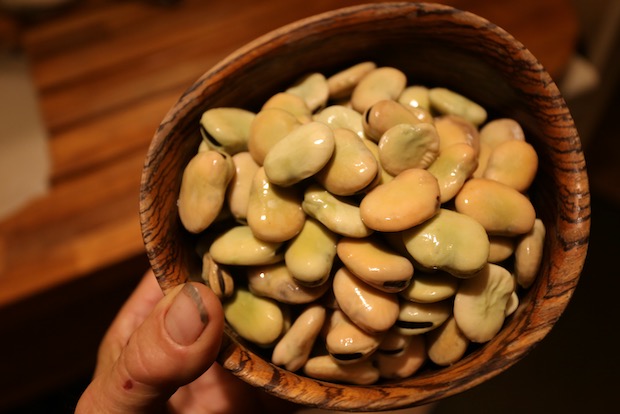
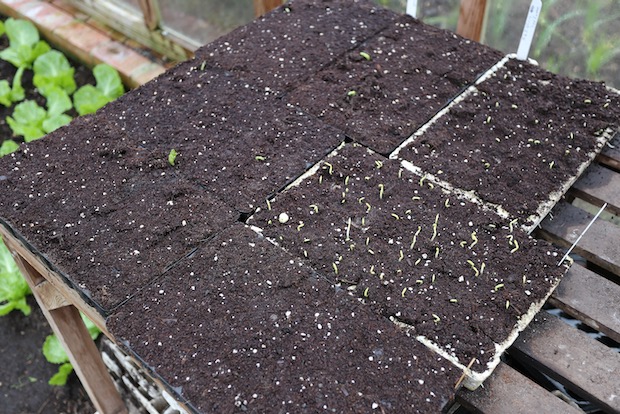
Pests
Harvests of Chinese cabbage have been wonderful, however with a lot of discarded outer leaves, because of slug damage. The some hearts have a fat caterpillar and all its frass, yuk! and this is despite a mesh cover, followed by two sprays of Bt. Pests love them :)
In contrast the radicchio hearts are clean, seed from Bingenheim and see my video on growing chicory.



Soil microbiology
Sexy topic? Oh yes, this is the leading edge of research into how soil works and how plants grow. We still know amazingly little about either topic, as shown by the worldwide degradation of soil and poisoning of plants.
I have been working with microbiologist Katelyn Solbakk from Norway: I send her Homeacres soil samples, she analyses them, we both learn and I can share her findings. This link is of soil from many of my beds, and shows a good amount of life, although fungi are not measuring high, possibly because of large aggregations of particles, but we don’t know.
On the other hand, some beds at Homeacres have soil that is almost white, smells of mushrooms and grows many fungi in damp, mild conditions.
I took soil samples from the dig bed and the no dig bed, and sent them to Norway where Katelyn Solbakk does analysis with a microscope. She found strong differences and this is her report, plus a photo below to illustrate the contrast in results
The dig/no dig trial beds show lower fungal levels than the main garden, perhaps because of wooden sides to the beds depriving linkage to woodchip-mulched paths. I plan to mulch both beds with compost of more woody origin this December.
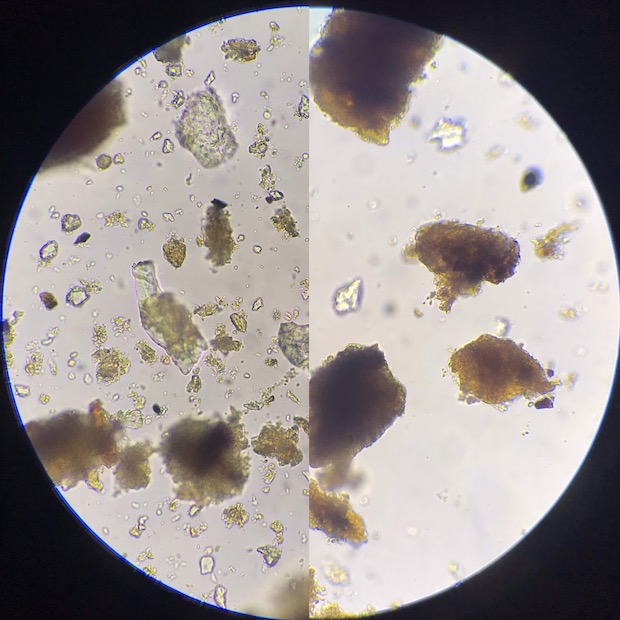

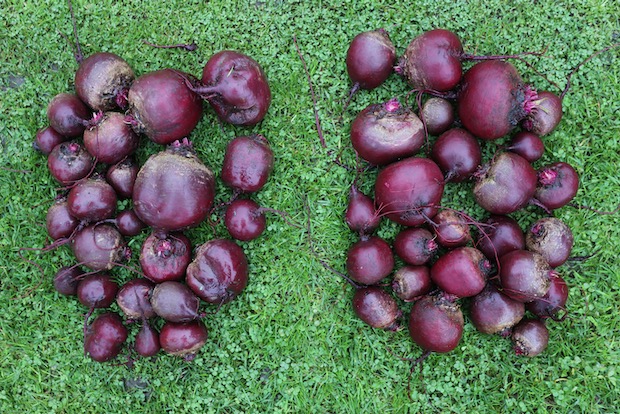
Trial results ongoing
This page has all the details, and here is a recent graphic of seven years results.
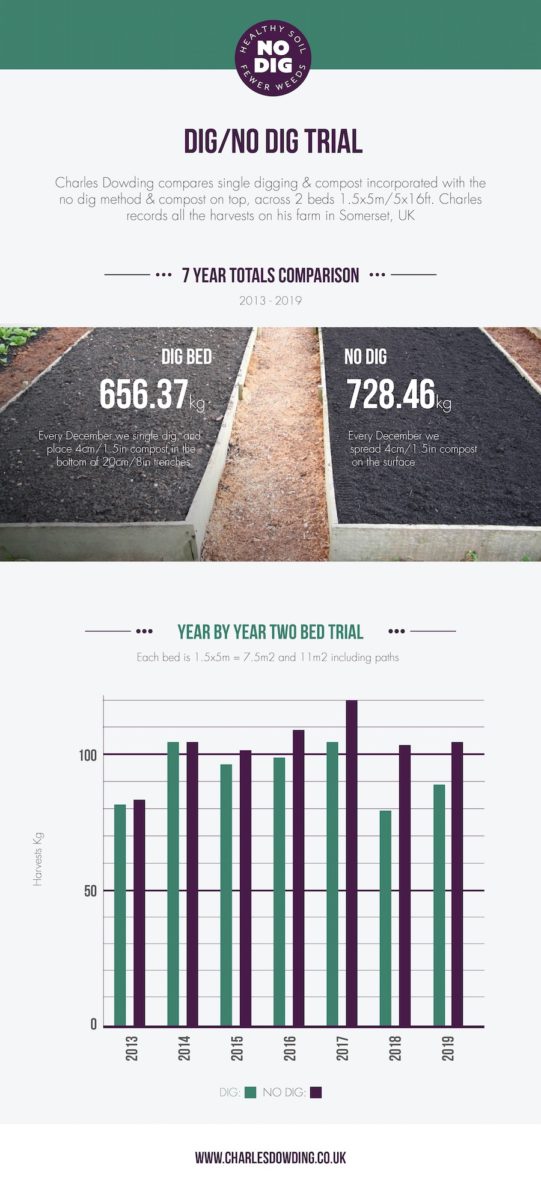
Frost hardiness and celery
The beetroot and celeriac look dramatically frozen, but it was only -2C 28F and they are fine. Celery on the other hand might suffer damage in that cold, but mine is interplanted with carrots and under mesh. See the varietal difference!
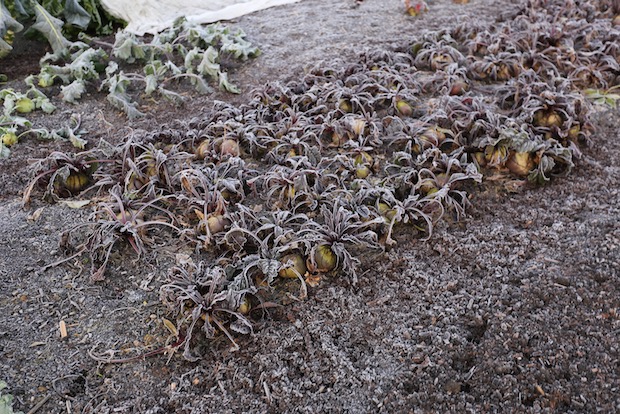
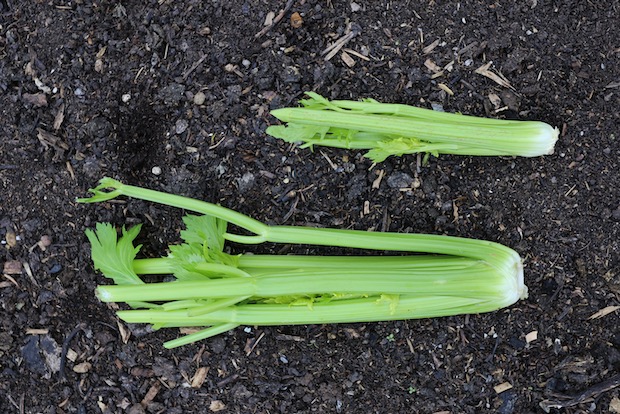
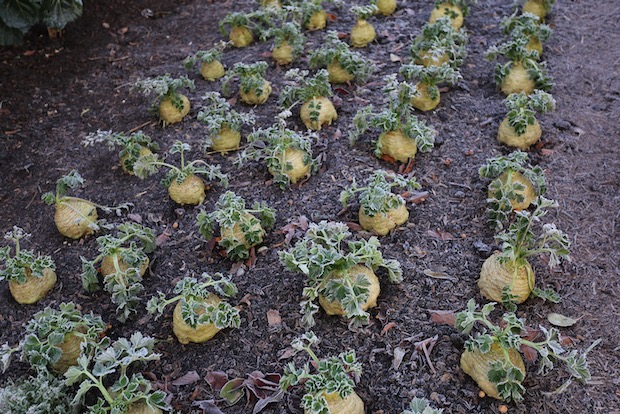
Frost and Florence fennel
For success like this, sowing dates are important. Discover more in my Diary and Calendar, see also our double offer £16.60 shipped worldwide.

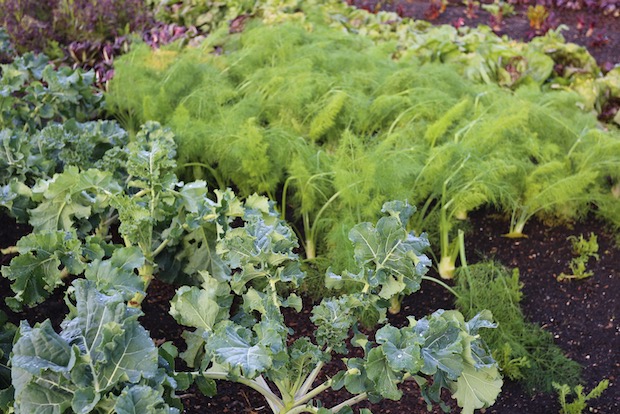

Soil boost
I am trialling a thin layer of rockdust on some beds. I think it's less about minerals, more about feeding soil life such as earthworms (good for their gizzards), and improving paramagnetism of soil, another aspect of plant growth we know little about. I want to learn more about this.
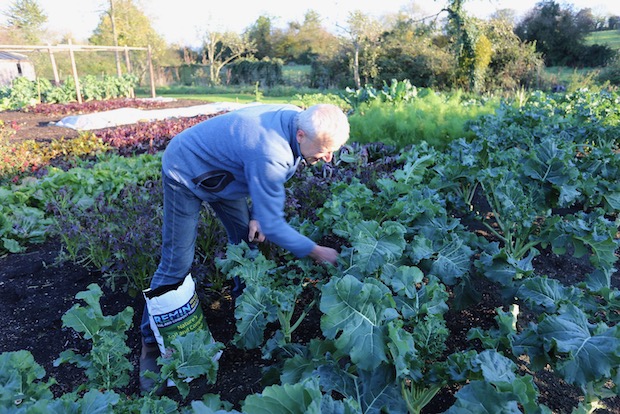
Undercover and outside
My main sowing was second week of September, transplanted 8th-10th October. My desire is for some autumn harvests from now, but for plants to be still young and vigorous as we head into winter. The main harvests are March and April, lettuce is Grenoble Red from home saved seed, gives vigour.
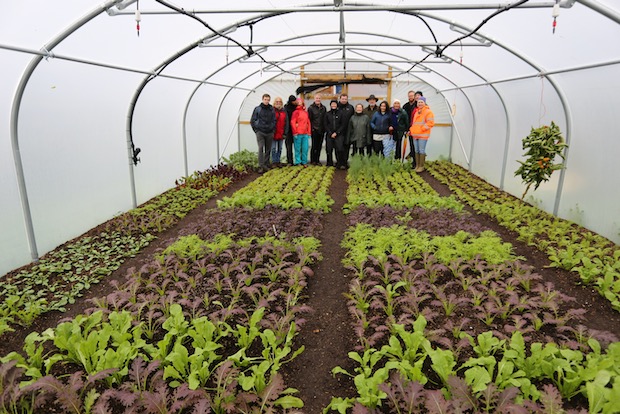
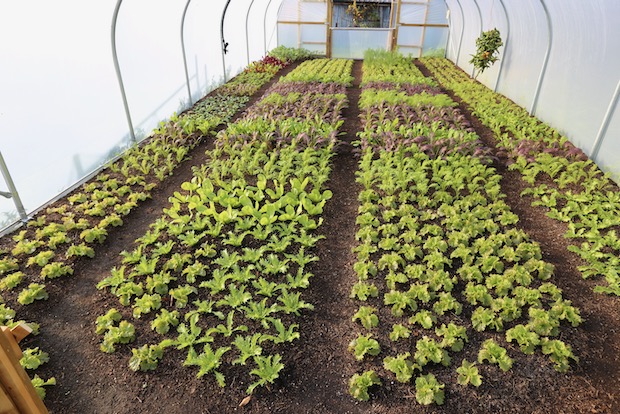

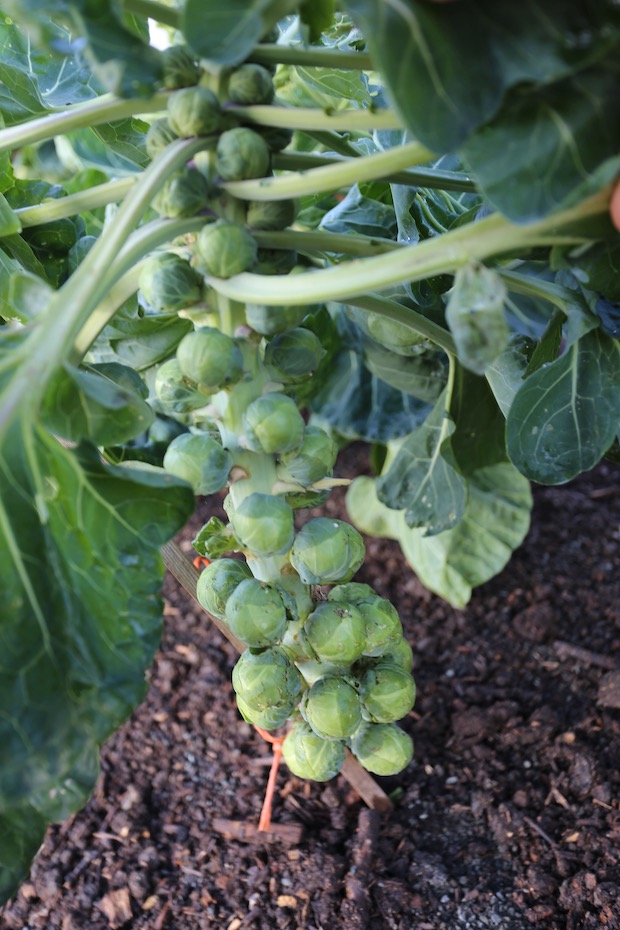
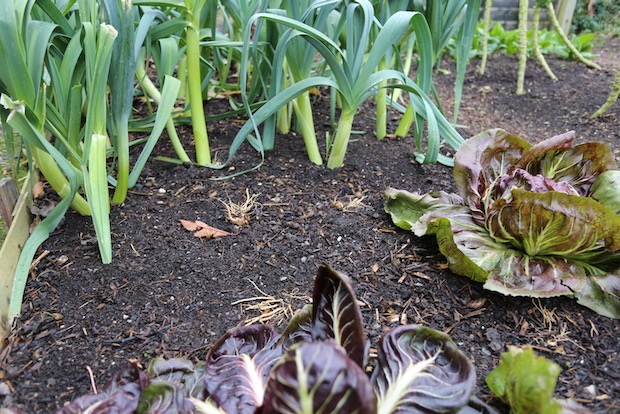








































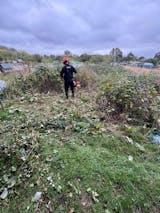
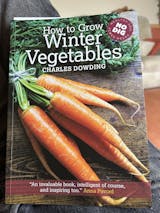


0 comments